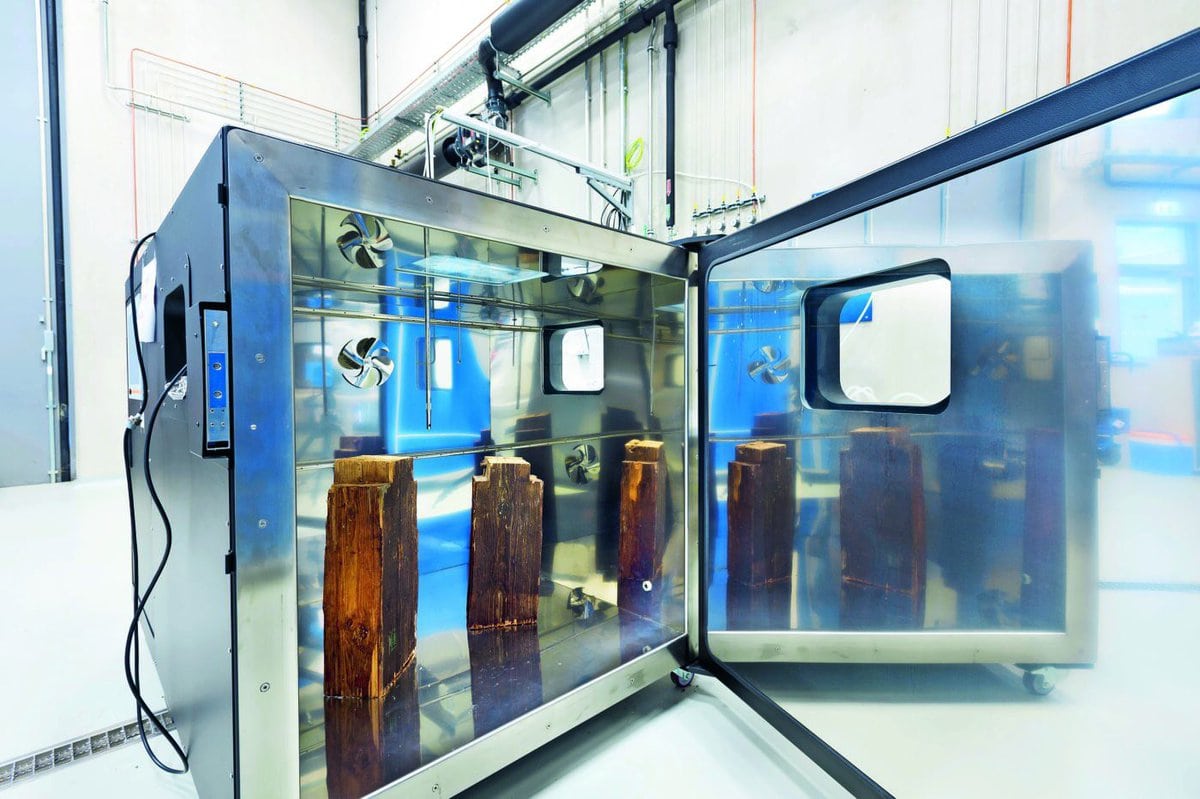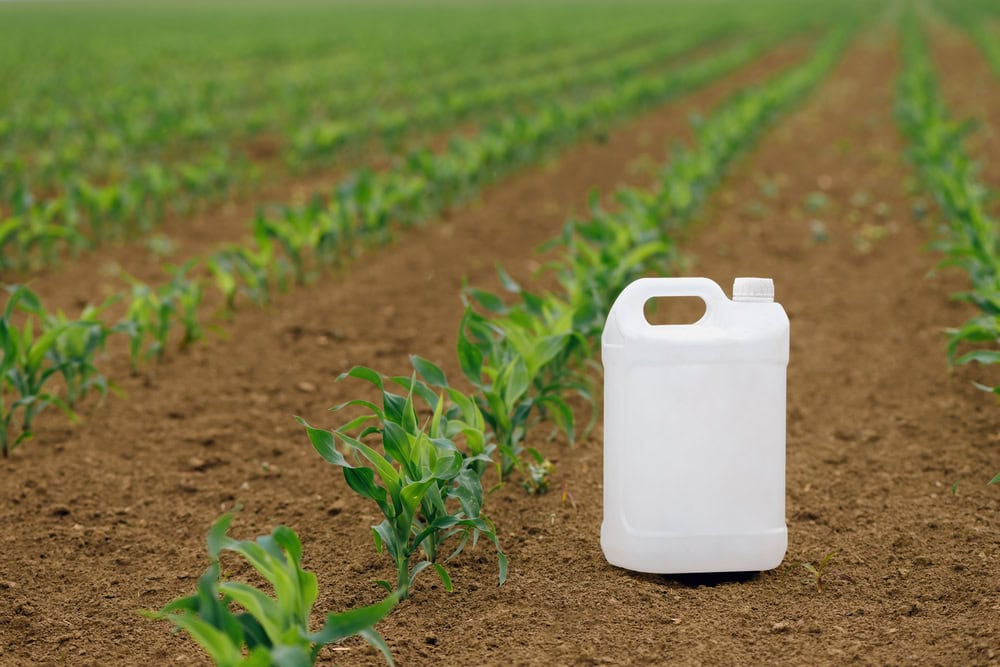Renovating contaminated wooden buildings
Toxic wood preservatives pollute numerous buildings in Switzerland. Disposal is difficult and very expensive. Fraunhofer IBP has now developed a process to preserve the building fabric and remove the contaminants from both the wood and the air.

There are thousands of buildings in Switzerland that are contaminated with toxic wood preservatives. Until well into the 1980s, these agents were used to protect wood from fungal and insect infestation. In particular, lindane and pentachlorophenol (PCP) were used in the formulations. However, these substances, intended to combat insects, proved to be carcinogenic and neurotoxic in humans.
They continue to pollute the air in Swiss buildings to this day. Although the substances have been banned in Switzerland since 1989, they are highly volatile. This means that their vapors can still be detected in many homes today. "It's like asbestos: the agents were simply used by the ton and are still polluting us today," explains Adrian Nussbaumer, building diagnostician at ingna-Ingenieurbüro für Nachhaltigkeit, who has been dealing with indoor pollutants for decades.
Expensive hazardous waste
According to Nussbaumer, the main problem is that the wood preservatives were also often used indoors. As the latter is more airtight than the exterior, very high concentrations of pollutants were and are sometimes found in the air indoors.
"If you have to dismantle such contaminated wooden structures, questions immediately arise about occupational health and safety and proper disposal. Such wood is a case for the hazardous waste incineration plant, but this is associated with high costs," says Nussbaumer. Disposal is also not a desirable step in terms of monument protection.
CycloPlasma technology should now provide a solution to the problem. It was developed by researchers at the Fraunhofer IBP in Valley (Germany). The method can be used to remove hazardous pollutants without leaving any residue or loss of substance in an environmentally friendly and sustainable way.
New cyclodextrin formulation encapsulates harmful substances
The researchers from the Environment, Hygiene and Sensory Science department and the Cultural Heritage Research business unit are combining adsorption technology to detoxify wood and the plasma process to clean the indoor air of pollutants that have already escaped. "This is revolutionary, as there is no longer any risk from lindane and PCP residues, even indoors," says Adrian Nussbaumer happily. Together with IBP, he is planning a joint project in Jona (SG): "The roof truss of a listed building is to be renovated. The client wants to use the upper floors as living space. Of course, this is only possible if the wood is no longer contaminated."
To achieve this, the adsorber material is applied to the wood like a glaze. The researchers use cyclodextrins (CD) for this purpose. These molecules are able to capture and bind pollutants such as lindane and PCP. They were discovered a hundred years ago and are used, for example, in the remediation of soils contaminated with heavy metals or oil.
"Cyclodextrins are ring-shaped dextrose molecule chains that are obtained enzymatically from starch. The ring structures made of sugar chains enclose the lindane and PCP in a cavity and thus encapsulate them completely," explains Dr. Andrea Burdack-Freitag, deputy head of department and head of the Analytics and Applied Sensor Technology group.
The scientist and her team have formulated a new gel-like formula from the cyclodextrins, which are available as a white powder. The gel can be applied to wood non-destructively. The colorless texture does not change the wood structure and is imperceptible on the wood surface. It does not trigger mold growth, is non-toxic, colorless, biodegradable and washable. "The formula seeps into the pores of the wood, where it absorbs the pollutants like a sponge." Depending on the concentration of pollutants, they remain bound in the CD layer, explains the researcher.
If too many toxic substances are present, they cannot be completely adsorbed by the formulation. The excess pollutants are then released into the indoor air. This is where plasma technology comes into play. A plasma device that can be attached to the ceiling, for example, absorbs the harmful substances and renders them harmless. "Electrodes in the housing generate a plasma gas through which the air flow with the pollutants is drawn. The plasma gas chemically breaks down the lindane and PCP. In addition, activated carbon filters prevent gaseous degradation products from escaping from the device," says Burdack-Freitag, explaining the principle.
Tests in the open-air museum
The first laboratory tests have been successfully completed. The technology is now being tested in the contaminated attic of the historic Thürlmühle mill on the grounds of the project partner, the Glentleiten Open-Air Museum in Upper Bavaria.
In this laboratory process, the existing pollutants could be completely broken down, and in tests in the Thürlmühle at the Glentleiten Open-Air Museum, the concentration of pollutants has so far been reduced to a third of the initial concentration. However, in previous tests, the formulation was only applied thinly to the visible wood surfaces. If the stain is applied more thickly, the concentration of pollutants can be reduced even further.
In the long-term test, the IBP researchers are now investigating how long the CD layer remains stable and whether no pollutants escape in the long term.
Technology for renovators and property developers
Adsorber and plasma technology can be combined depending on the pollutant load and room size. "The remediation measures are based on a modular principle, so to speak. We have applied for a patent for our formulation for the renovation and construction sector. The restoration of wooden furniture and wooden objects is also conceivable," says the scientist. The solution may also be suitable for other building materials such as concrete and screeds, provided they also contain lindane and PCP. However, tests with potential industrial partners are still pending.
This article was published in the trade magazine save 1/2024. here Your sample copy.









